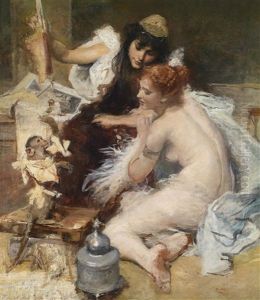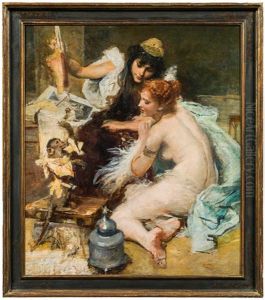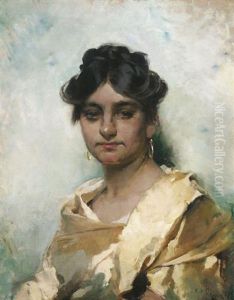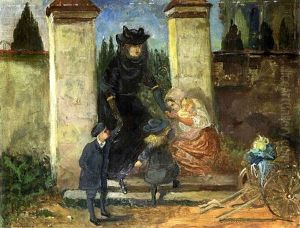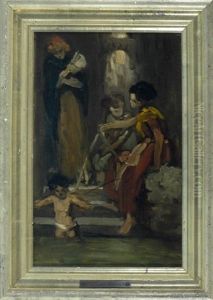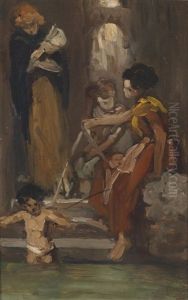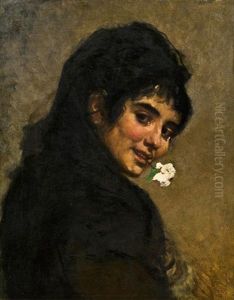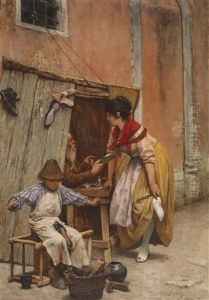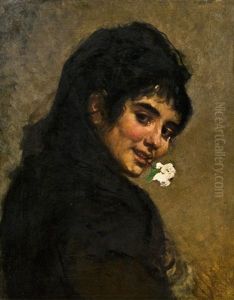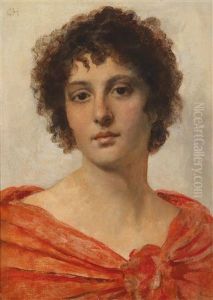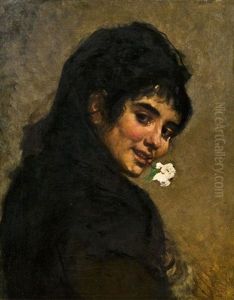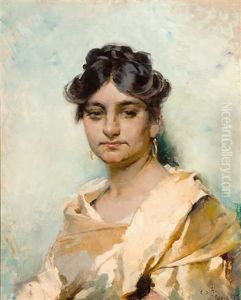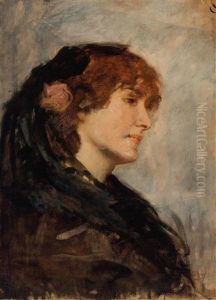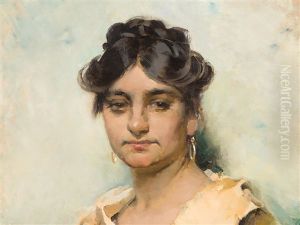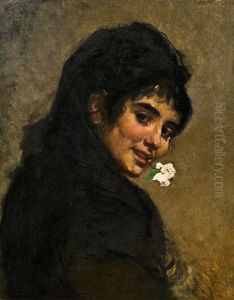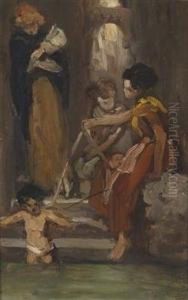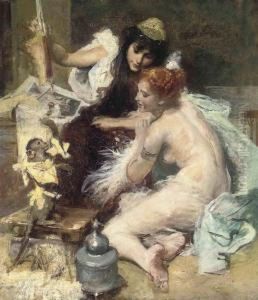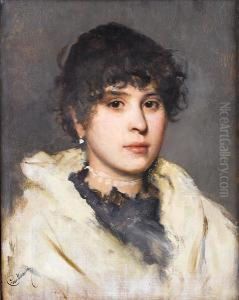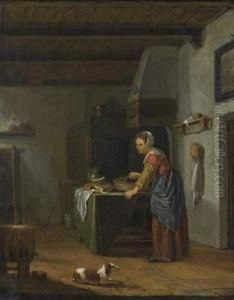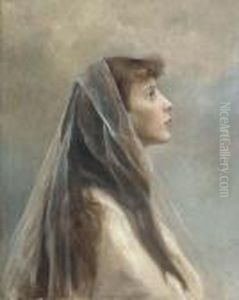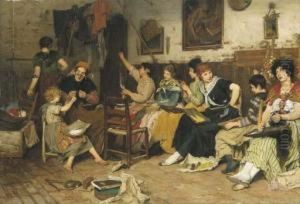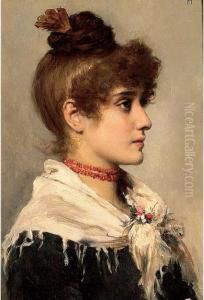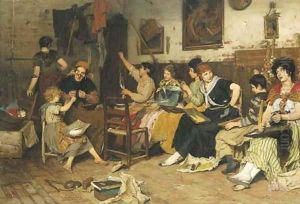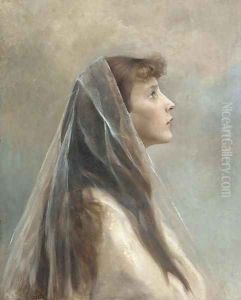Cecil van Haanen Paintings
Cecil van Haanen was an Austrian painter, known for his skillful depiction of everyday life scenes, often with a focus on light and shadow. Born on February 26, 1844, in Vienna, Austria, he was the son of the Dutch-born painter Remigius van Haanen, which gave him a strong artistic heritage from a young age. Cecil van Haanen showed an early aptitude for art and trained under his father before enrolling at the Academy of Fine Arts Vienna.
His education at the Academy further refined his natural talent, and he quickly became known for his genre scenes and portraits. After completing his studies, van Haanen traveled extensively throughout Europe, absorbing various cultural influences and artistic styles, which would later inform his own unique approach to painting.
In the late 19th century, van Haanen settled in Venice, Italy, a city that would deeply inspire his work. He became enchanted by the Venetian light and atmosphere, often capturing the daily life of its inhabitants in his paintings. His works from this period are characterized by their vibrant light and color, as well as a keen sense of observation that brought the scenes he depicted to life.
Cecil van Haanen's paintings were exhibited in numerous international exhibitions, and he gained considerable recognition during his lifetime. His works were appreciated for their realism and attention to detail, and he became particularly noted for his ability to capture the effects of sunlight on water and architecture, a testament to his time spent in Venice.
Despite his success, van Haanen remained relatively obscure in the broader scope of art history, with his works often overshadowed by his contemporaries. Nonetheless, his contributions to genre painting and his mastery of light and color have made him a respected figure among those who study 19th-century European art.
Cecil van Haanen passed away on January 16, 1914, in Florence, Italy. Today, his paintings can be found in various art collections and museums, and they continue to be celebrated for their evocative portrayal of Venetian life and the artist's technical prowess.
